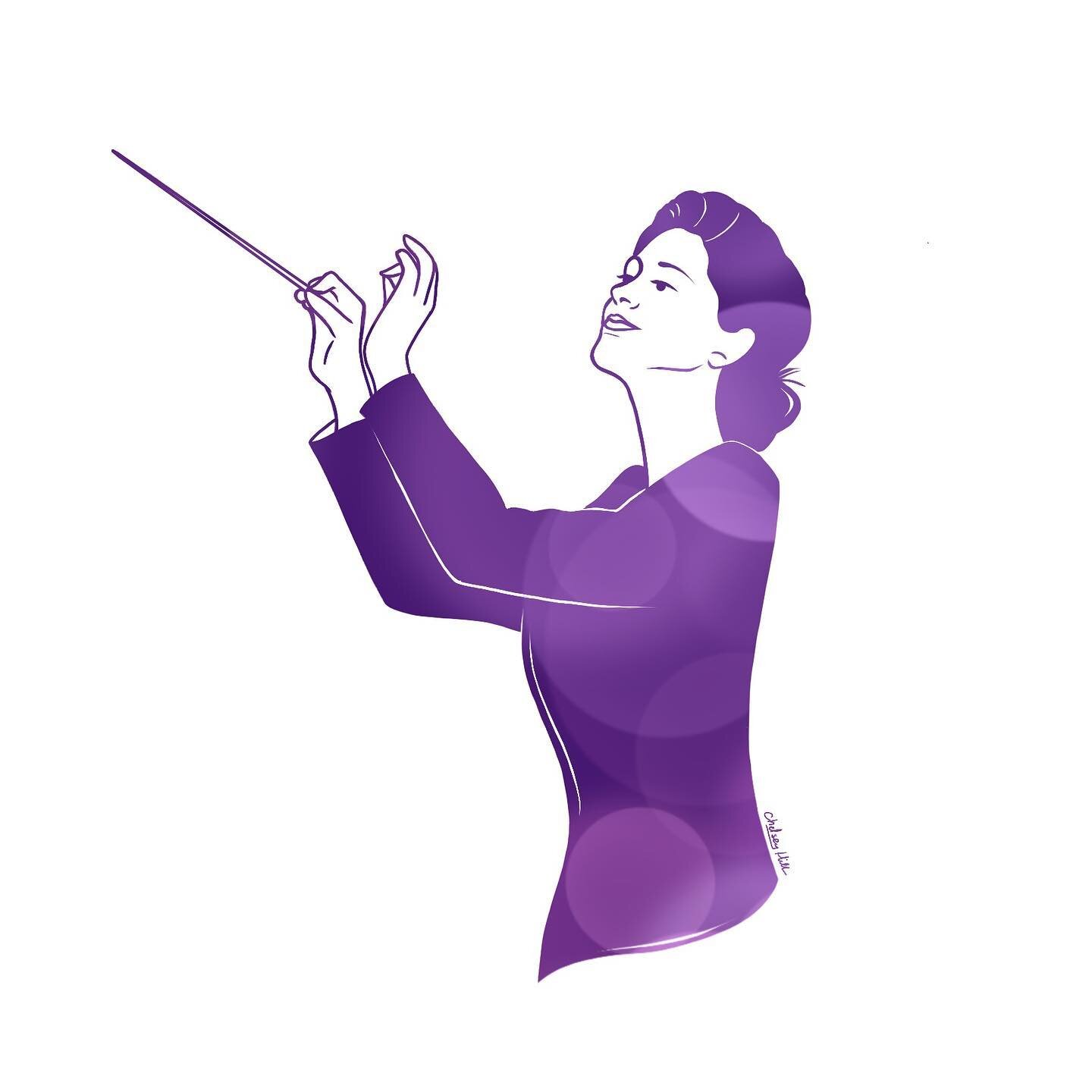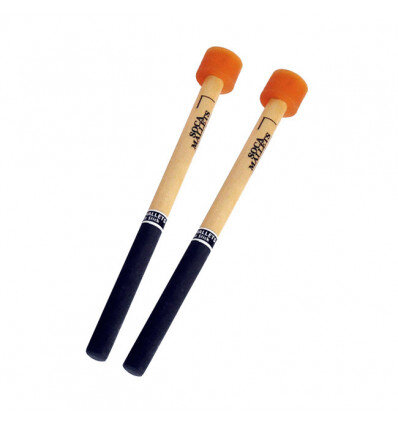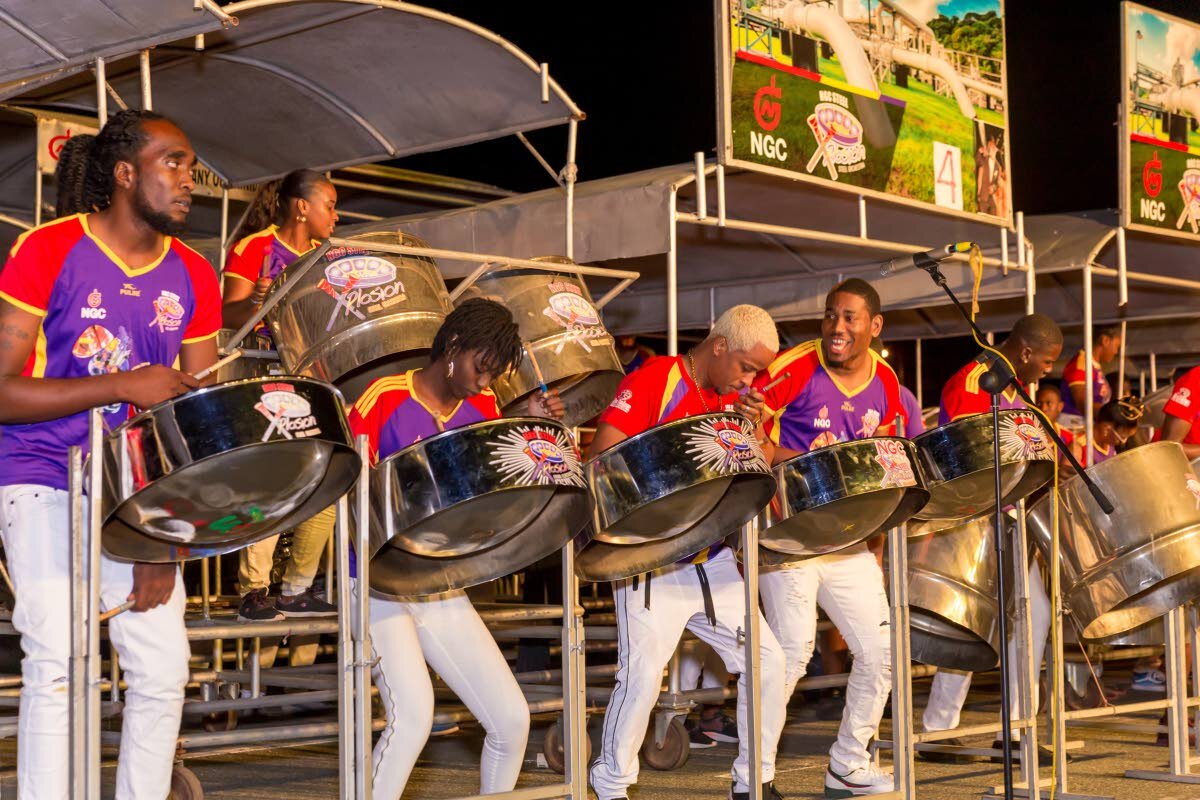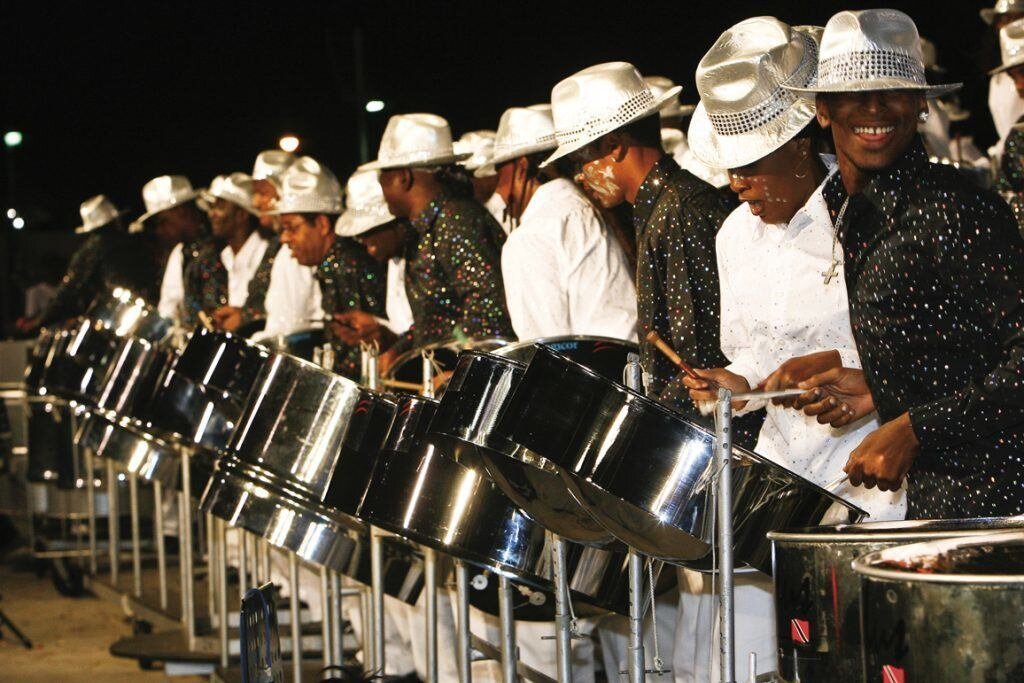Let’s begin by watching the following video. Steelpan music probably sounds somewhat familiar to you in that you have heard it or music similar to it before. As you watch the video, consider some things:
Where have you heard this type of music before?
Do you associate it with a specific place/culture/people/setting?
What purpose might this type of music serve?
In this video specifically: what kind of instruments do you see/hear? What are the musicians wearing? How are they arranged physically? What is going on besides just playing the instruments? What about the music itself? What is striking you about the Rhythm/Melody/Harmony/Timbre/Dynamics/Texture/Form of the music that gives Steelpan its unique quality?
ORIGINS OF STEELPAN
Steelpanning began in the small two-island nation of Trinidad and Tobago located off the east coast of Venezuela in the Caribbean. The islands were originally inhabited by indigenous South Americans before Spanish colonization began in the 16th century. The Spanish transported enslaved African to the islands to labor on indigo, rum, and sugar plantations. The enslaved people were treated poorly and many of their cultural traditions were outlawed by their captors. In the 18th century, French colonists arrived and brought Carnival (a Catholic feast/celebration preceding the period of Lent). Enslaved Africans were barred from participating in the festival so they created a parallel festival known as CANBOULAY and this alternative festival is where Steelpan, CALYPSO, and many other cultural markers of Trinidad and Tobago were born.
FOUND PERCUSSION
Not only were enslaved Africans barred from participating in their cultural traditions and participating in Carnival, but they were also prohibited from playing instruments. This resulted in members of the community getting very creative and inventing musical instruments from everyday objects and trash in a method known as FOUND PERCUSSION.
The first found percussion in Trinidad consisted of the simple wooden sticks used in TAMBOO BAMBOO (a set of hollow, pitched “bamboo drums” beaten on the ground). This ensemble grew to include other found percussion such as a glass bottle and spoon, and a biscuit tin. Eventually, the metallic trash instruments outnumbered the Tamboo Bamboo (for being louder, more durable, and capable of more timbres and effects), and the bands became majority steel. What we know as Steelpan today joined these ensembles in the 1930’s when discarded 55-gallon steel oil drums started to be dumped on the coasts of Trinidad and Tobago.
Because of its humble beginnings, Steelpanning did not receive much respect initially and was considered, at best, a low-class form of music-making and, at worst, associated with rough characters, criminals, and violence. Women were prohibited from playing steelpans until the late 1970’s when the genre began to become more mainstream and was deemed “safer.”
STEELPAN TERMINOLOGY & CONSTRUCTION
Steelpan does not have standardized terminology and while the word “STEELPAN” will yield the most research results in the field, the genre and instrument can also be referred to as: STEEL PAN, STEEL DRUM, or simply PAN. An ensemble of steelpan players is referred to as a Steel Band, Steel Orchestra, or Steel Drum Ensemble. A musician who plays pans is known as a PANNIST.
The bottom of the steel drum is first stretched into a bowl shape with hammers or other tools (this process is called SINKING). Next, each note is tuned into the bowl by flattening ovals into the surface. The larger the oval, the lower the pitch (large oval = low note, small oval = high note). Finally, the barrel portion of the steel drum is cut off, leaving a certain depth behind called the SKIRT. The Skirt directly effects the TESSITURA (pitch range) of the pan. Pans with shorter skirts have a higher tessitura while pans with longer skirts have lower pitch range.
Pans with higher notes can fit more notes in the bowl since each note takes only a little room. Pans with lower notes have fewer since each pitched oval must be very large. Pans have anywhere from 3-30 note ovals in the bowl. This diagram of a Double Second shows two paired pans that - when combining notes from both pans - span three octaves of CHROMATIC (all the black and white keys on a piano) pitches.
Today, large steelpan ensembles have many performers playing many types of pans that play in high and low ranges. In this way, a steelpan ensemble is like an orchestra.
Traditional steelpans were and are made out of discarded oil drums. However, modern pannists looking to achieve the best timbre and sound quality have began constructing pans using fresh (non-oil drum) steel so the physics and acoustics can be managed with much more precision. The video below demonstrates the difference between an oil drum pan and a custom pan. *Note on the video: he is joking at the end!!
How It’s Made: Steel Drums
Comparing custom and steel drum pans
WHEN A DRUM IS NOT A DRUM …
A 55-gallon Oil Drum
The word “drum” in STEEL DRUM is derived from the fact that the instrument is built out of a 55-gallon oil drum. The word “barrel” is often used to describe this object as well, although this is a misnomer as barrels bow in the center (like a wine barrel) while oil drums are completely cylindrical (as most drum instruments).
To make matters even more confusing, based on the alteration to the oil drum to transform it into a musical instrument, it no longer serves as a “drum” by instrumental standards (MEMBRANOPHONE) but rather, it joins the family of pitched mallet percussion instruments like the xylophone, marimba, orchestra bells, chimes, and vibraphone (called IDIOPHONES).
So the instrument is not a drum but maintains “drum” in its name based on the object it is constructed from - which was named after the instrument “drum.” Get it?
AN ORAL/AURAL EDUCATION TRADITION
All Calypso and Steelpan performance traditions are taught in an oral tradition. This is when one musician will explain verbally or play how the music is supposed to go and the student will play it back on repeat until they have it right. ORAL tradition implies that the teacher is speaking to teach (rather than teaching out of a book or through written music). AURAL tradition means that the students learn by listening to their teacher - either verbally explain or play the music as it should be performed.
Classic Calypso: “Jean & Dinah” by Mighty Sparrow
CALYPSO & SOCA
Steelpan is a type of instrument and ensemble but doesn’t necessarily describe the music that these musicians play. One can play any kind of music on a steelpan and, indeed, steelpan ensembles often play covers of well-known classical and pop tunes in their repertoire. For the most part, the type of music that most steelpan ensembles play are music genres specific to Trinidad and Tobago called Calypso and Soca.
CALYPSO music is a style that originated in the mid-19th century featuring African rhythm, French-creole or English language lyrics, and Western melodies and vocal harmony.
SOCA music is a derivative of Calypso that has been around since the 1970s. It specifically came about as a way to bring younger listeners to the cultural tradition of Calypso but it differs in that it infuses elements of Soul, Funk, and Latin music, as well as a Haitian genre called Cadence.
Soca: “More Sokah” by Nailah Blackman (the original version of the first steelpan video at the top of this page)
Calypso Fusion: “Calypso” by Luis Fonsi
INSTRUMENTS
Initially, Steelpans were diatonic (associated with a single scale) instruments with a limited range of notes. Pannists would wear the drum strapped to their bodies with rope so they could play and move (often in outdoor settings like a parade). Today, most pans are CHROMATIC (the pan can play all the white and black keys in a given register/range of the piano) and there are different sizes of pans to accommodate different musical ranges.
Low Tenor Steelpan
HIGH TENOR & LOW TENOR
These drums are considered the solo instruments of the Steelpan orchestra, having the most pitches available to the player and the highest pitch out of the ensemble. The higher the pitch (especially when all of the instruments have similar timbre), the more easily the instrument will be heard.
Double Tenor Steelpan
DOUBLE TENOR & DOUBLE SECOND
These instruments are lower than the single pans above and have less notes on each pan. The biggest difference is that all the notes are divided over two pans and one player plays both at the same time, playing a left or right pan depending on what note they need to play. These are the most versatile and can play melody or accompaniment.
Triple Cello Steelpan
QUADROPHONIC, GUITAR, CELLO
These drums are purely harmonic accompaniment drums. They are lower in range to the tenors above. The Quadrophonic is divided over 4 drums, the Guitar 2, and the Cello 3.
6 Pan Bass Steelpan
4 PAN & 6 PAN BASS
These are the largest drums and are responsible for the bassline of the music (like a bass or a tuba in an orchestra). Each drum has 2-4 notes only. Usually these pans play just one note at a time and slower rhythmically than the rest of the ensemble.
Steelpans are played with two even drumsticks that are tipped with rubber. Without the rubber tip, the sound of wood hitting steel would be much less pleasant.
Steelpan ensembles generally also include DRUM SETS and other percussion instruments to provide unpitched rhythm including a BRAKE DRUM (literally the brake drum off a car), SCRAPERS, SHAKERS, and others.
MUSICAL ELEMENTS OF STEELPAN …
RHYTHM: The traditional style of music played on Steelpans, Calypso, has an African-influenced rhythmic base. Most songs are in duple meter to maintain a symmetrical dance rhythm. Songs can be of a variety of tempos but generally stay the same speed throughout the song. Larger pans will take the main beat while smaller pans play the more complex subdivided rhythms. There tends to be heavy BACKBEAT (an emphasis on the even beats: 1 - 2 - 3 - 4) which helps to promote dancing.
MELODY: Most pans heard in modern times are chromatic, meaning they can play any note in any key, but most Calypso music is DIATONIC (using notes from just a single scale). Traditional steelpan music is very tuneful and similar to melodies that would be heard in Western Classical Music. Most melodies are in major as the music tends to have an upbeat, happy feeling associated with it. With the availability of chromatic pans, the melodies performed continue to become more complex and chromatic.
HARMONY: Harmony of steelpan playing is based on Western Classical harmony as Calypso was developed with the traditions of Spanish, French, and English influence on the Trinidad & Tobago colonies. Harmonies are mostly triadic and melodies will often be matched with a harmony line throughout the piece.
TIMBRE: The timbre varies little from steelpan to steelpan making a steelpan ensemble sound very consistent timbrally. The timbre of these drums is generally round and mellow with a pingy quality on the attack (when the stick strikes the drum). The other unpitched instruments (drum set and other percussion) add increased heaviness to the attack at the beginning of the beat.
DYNAMICS: Dynamics play an important part of Steelpan. Generally, dynamics follow the same rules as Western Classical music with different sections of a piece being loud or soft or sections building gradually louder or decaying. Overall, steelpans tend to be played on the loud side as they are meant to be heard and danced to outdoors.
TEXTURE: Most Calypso and Soca music that would be played on steelpans is composed in simple melody-accompaniment homophony. There is one section of steelpans on the melody, others might play a harmony to the melody, and the lower bass steelpans play accompaniment.
FORM: Calypso and Soca have their roots in simple Caribbean folk music. The form of these pieces tend to be simple and predictable. Most are in some kind of song or modified song form. Others might be even simpler and in strophic form. More advanced competitive music have more complex forms.
COSTUME
There is no set costume or apparel for pannists. In general, performers wear comfortable clothing that would be considered street or “island” wear (like Hawaiian shirts). In an ensemble setting, pannists will often wear matching outfits of identical Hawaiian shirts or streetwear to distinguish themselves as a performing group.
PANORAMA
Since 1963, Trinidad & Tobago have hosted a national steelpan competition during the season of Carnival. Pan orchestras from all over the country practice to compete in the festival. In 2015, the festival was opened to international ensembles and groups from 38 countries participated.
Usually, ensembles will custom arrange a well-known Calypso tune for their competition piece. The arrangement will include an original introduction, the melody, and then increasingly complex variations of the melody.
In 2020, Desperadoes (the group from the first video above) won with their arrangement of Nailah Blackman’s “More Sokah”. Other ensembles that have won several times in the past decade include the Trinidad All Stars, the Renegades, and Phase II Pan Groove.
OTHER STYLES OF STEEL DRUMS
Hang Drum
In recent decades, musicians and instrument makers have developed similar techniques to steelpan construction to create a variety of adjacent instruments including the Hang Drum and the Rav Drum. Both have concave bowls rather than convex.
HANG DRUM: a UFO-shaped hollow metal drum with note ovals similar to the steel drum. This instrument is usually constructed using just a pentatonic scale (a scale of only 5 notes) which helps it to play simple, meditative, and pleasant melodies and harmonies. Players strike the drum with their fingers and palms.
Rav Drum
RAV DRUM: A more recent instrument to be developed, the RAV Drum is almost identical to the Hang Drum but instead of note ovals, the instrument is constructed with slits in the steel to create each individual note.
FAMOUS PANNISTS
Ellie Mannette (1926-2018)
ELLIE MANNETTE (Trinidad)
“Father of the Modern Steel Pan”WINSTON “SPREE” SIMON (Trinidad)
TONY WILLIAMS (Trinidad)
RAY HOLMAN (Trinidad)
LIAM TEAGUE (Trinidad)
WHERE TO HEAR STEELPAN MUSIC IN THE USA
College and some High School campuses (including Pacific Lutheran University and University of Washington)
TOUCANS STEEL DRUM BAND (Seattle, WA)
Tropical/Beach/Resort locations in the southeast (many parts of Florida)
Areas with high Trinidad & Tobago immigrant populations














